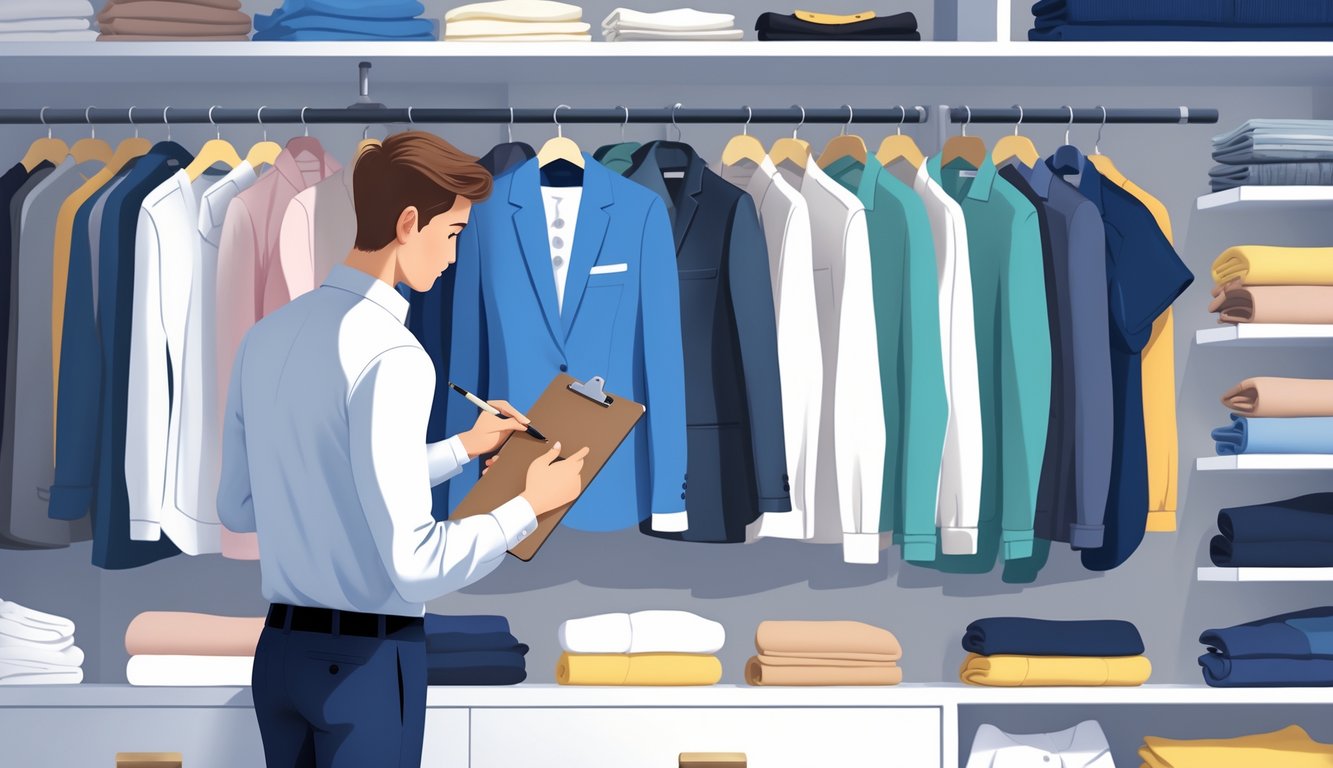
Common Closet Staples That Often Go Unworn
How do “essentials” turn into a collection of barely-used, tag-on stuff? My biggest mistake: believing every “must-have” list instead of noticing what I actually wear. Most “staples” just gather dust. It’s not just me—apparently, a UK survey found people waste about $300 a year on unworn basics. That’s a lot of money for stuff that never leaves the closet.
The Myth of Must-Have Jeans
Stylists always hype the “perfect pair of jeans,” like Levis 501s are magic. But, um, they pinch my waist and sag everywhere else. Everyone hoards jeans—closet staple guides swear they’re foundational, but most of my friends have drawers full of pairs they never wear.
I counted last year: five pairs, two sizes, all shapes, none worn since 2022. The “investment” denim? $200 gone because I thought selvedge meant something. And if dark wash jeans are so universal, why are there a million fits? Every brand tweaks their cuts, so we all end up with duplicates, still hoping for the mythical “perfect” pair.
Honestly, laundry day is the only time I remember half these jeans exist. Maybe capsule wardrobes are overrated. Not every staple works for everyone, and forcing jeans into my rotation never fixed anything. No style blog tells you what to do with the pairs you dread.
Workwear and Special Occasion Pieces
“Classic black trousers”—I bought them, wore them twice, and now they just take up space. I used to think blazers and shift dresses would get weekly use, but office dress codes got chill while my closet filled up with unworn “essentials.” Most people I know admit their workwear just sits, especially if they work from home or their office is cool with hoodies now.
And don’t get me started on cocktail dresses or the “go-to” LBD. Bought a silk dress for an event that went virtual—now it’s just another ghost, tags still on. Style guides (like this one) keep pushing checklists, but the truth? I wear maybe 20% of my work stuff, tops.
Dry cleaning piles up, tailors get ignored, and events come and go, but I always end up grabbing the same cardigan “just in case” instead of risking the weird, stiff formalwear.
Shoes and Accessories
Twelve shoe cubbies. Three pairs in use. The rest? Dust collectors. Those “must-have” ballet flats squeak, my platforms are for show, and the boots—unless I’m hiking—might as well be in storage. Even the best staple lists forget about blisters and ugly square toes.
Accessories? Belts, scarves, random bags—they just make leaving the house harder. I bought most because “everyone needs one,” not because they did anything for my outfits. Chunky jewelry tangles, statement clutches get ditched after one party. Sunglasses multiply, but I only wear one pair. Why did I think three brown belts would help when I hate tucking in shirts?
Versatility isn’t wearability. If “timeless” meant anything, I wouldn’t stand barefoot in the closet every morning, dreading all my shoe options.
Decluttering With Purpose: Letting Go of the Unnecessary
My closet’s stuffed, and it’s not just about space. All those “essentials” I convinced myself to keep—barely worn, mostly forgotten—just drain my money and energy. Makes getting dressed a pain and hides the stuff I actually like.
Recognizing Sentimental Attachments
Tried to toss a faded concert tee—couldn’t do it. “Memories,” right? My friend who organizes for a living says everyone freaks out about giving up sentimental stuff, even though it lives in boxes. Dr. Susan David (TED Talk, 2017) says emotional attachment blocks decluttering, which is why the “spark joy” thing only works if you know what joy feels like at 1 a.m. on laundry day.
I kept a blazer that never fit, thinking I’d wear it for some mythical job interview. Turns out there’s a real cost to clutter: wasted time, storage, stress. Sometimes I write down why I’m keeping something—usually nostalgia, not logic. Sometimes that helps, sometimes I just eat ice cream and shove it back under the bed.
Sustainable Ways to Rehome Clothes
My first thought: donate everything, feel like a hero. Problem is, a lot of it never gets worn again—sometimes it just ends up overseas. A Goodwill worker told me over 80% of donated clothes don’t get resold locally. So, yeah, not the feel-good story I hoped for.
I use resale apps like Poshmark or ThredUP sometimes—slow, but I once got $40 for a jacket I hated. Clothing swaps with friends are better if people are honest about sizes. Local drives for specific stuff (coats, workwear) feel more useful, and places like Goodwill Chester County talk about decluttering with purpose—if you don’t try to do it all at once. Anything too gross to donate goes in a textile recycling bin, if I remember to check their hours. None of this is quick; my trunk’s still half full.
Benefits of a Streamlined Wardrobe
Cutting back sounds easy, but it’s not. Every time I actually declutter, mornings get easier—less wrestling with hangers, less guilt about pants I never wear. Not glamorous, but I’ll take it. The National Association of Productivity & Organizing Professionals claims people save up to 30 minutes a day with fewer clothes (NAPO, 2021). I mean, maybe.
With fewer choices, I wear my favorites more, rediscover old gems, and rarely regret it. Supposedly, less clutter means better sleep and fewer decisions—sounds fake, but maybe there’s something to it. Declutterbuzz.com says physical space equals mental calm, but the mess mid-purge still makes me anxious. Maybe someday I’ll stick to “one in, one out,” but, let’s be real, I’ll probably buy more cardigans on sale. At least now there’s less stuff mocking me from the bottom drawer.



